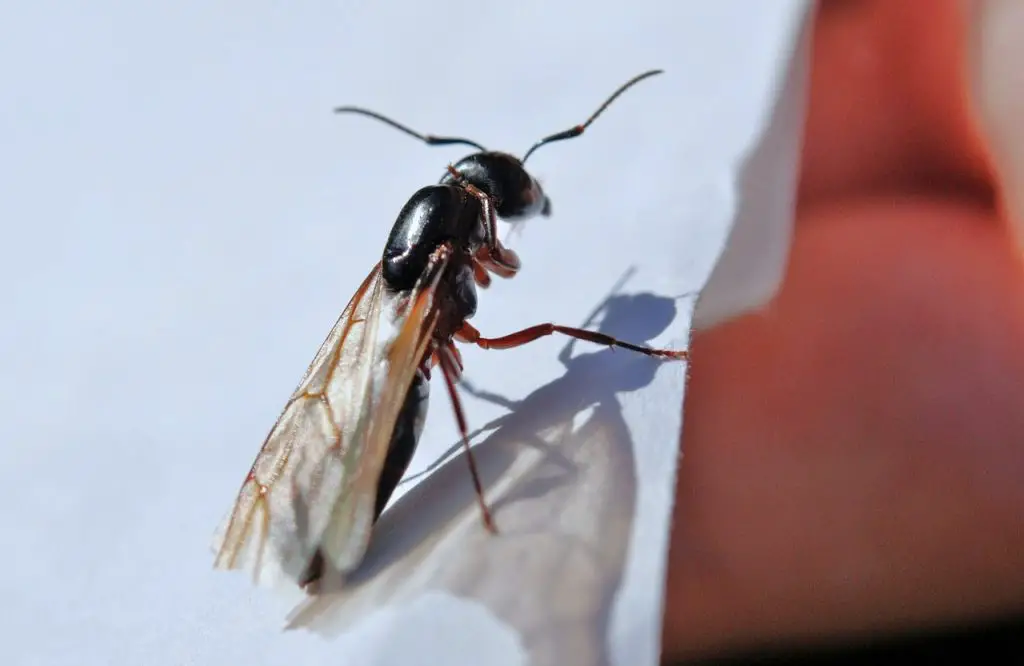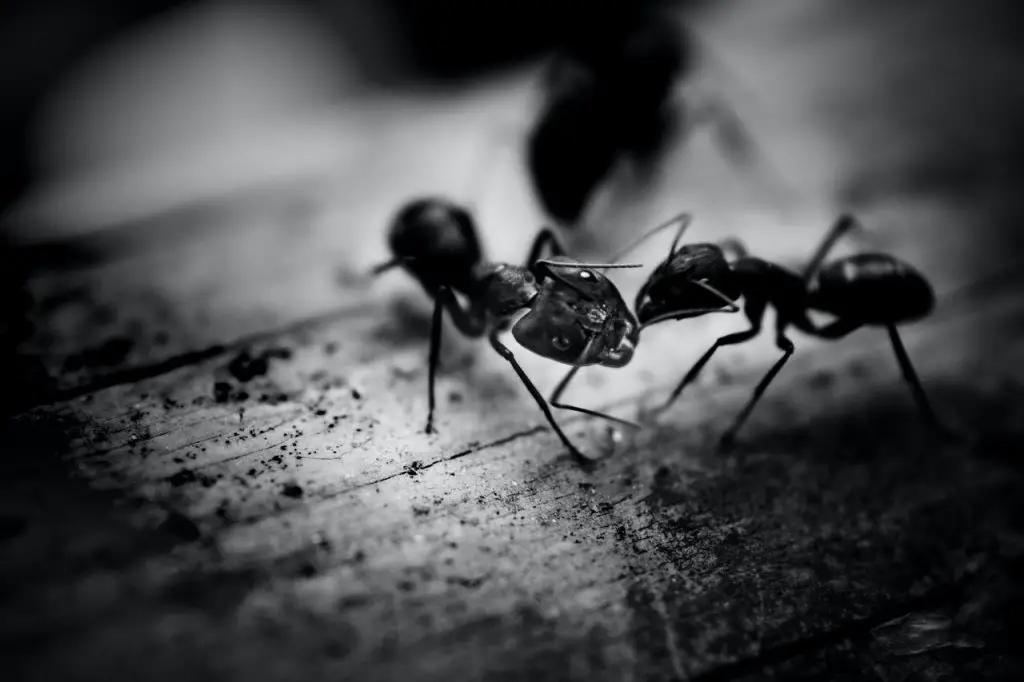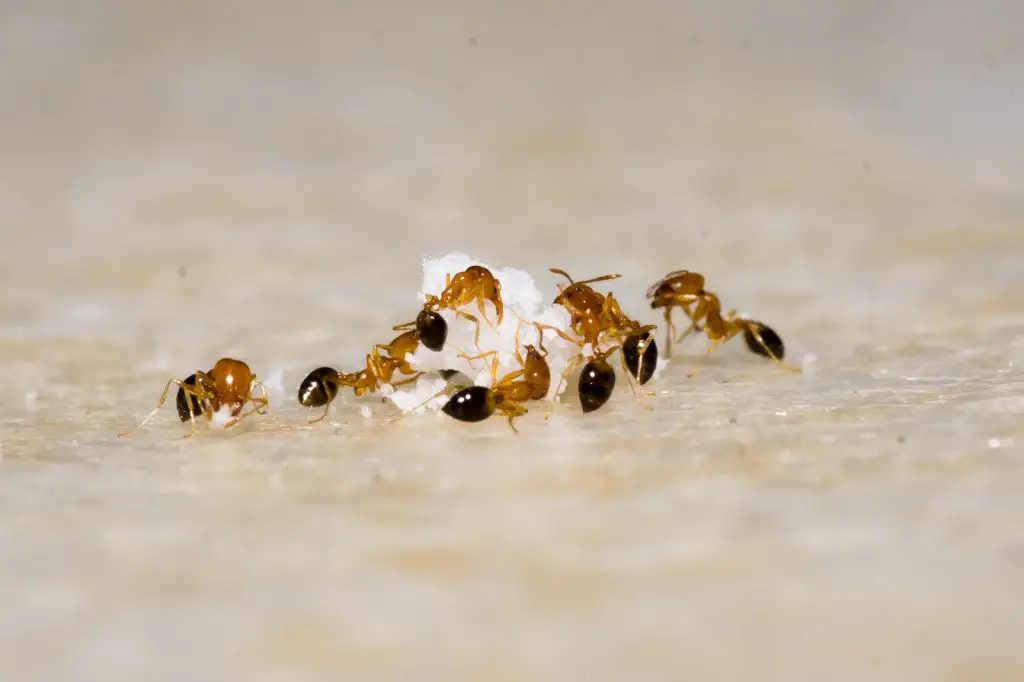Ever found yourself gazing up, and your eyes caught the sight of a miniature army in flight, sparking a moment of disbelief? Yes, those airborne wonders are not figments of your imagination—they’re flying ants!
A captivating and relatively unknown chapter in the vast encyclopedia of ant behavior, these skyward explorers challenge our preconceptions of these industrious insects. The miraculous phenomenon of flying ants is not merely a display of nature’s ability to surprise us, but also a complex and vital component of the ant life cycle.
Ready to embark on a journey into the intriguing world of flying ants? This lesser-known aspect elevates the already remarkable life of these tiny creatures to another level.
Let’s explore together.
Flying Ants: Exploring the Enigmatic Nuptial Flight Phenomenon
Flying ants, also known as alates, are the sexually mature males and females of the ant colony. They grow wings for one sole purpose – to mate and start new colonies.
This extraordinary event, known as the “nuptial flight,” occurs during specific weather conditions, often after a period of rain followed by bright, warm sunshine.
Flying ants exhibit distinct physical characteristics that differentiate them from their non-flying counterparts. While their general body structure resembles that of typical ants, it is their wings that truly set them apart. These wings, often transparent or translucent, extend beyond the length of their bodies, enabling them to navigate through the air.
What Do Flying Ants Look Like?
When it comes to color and size, Flying ants showcase a remarkable variety influenced largely by their species. Many flying ants possess a dark, often black, body coloration. As for their size, flying ants are generally between 1/4 to 1/2 inch (6 to 12 millimeters) in length. However, this measurement can fluctuate depending on the ant species and whether the ant is male or female, with females usually being larger.
Flying ants are equipped with two pairs of wings, which are essential for their mating flights. These wings are not of equal size. The front pair is noticeably larger than the rear pair, a distinguishing characteristic when compared to other flying insects like termites, whose wings are of equal length.
As for their bodies, flying ants maintain the classic three-part structure of ants: the head, the thorax (middle section), and the abdomen (rear section). Males and females can be distinguished by size, with females typically larger than males.

Life Cycle of Flying Ants
The life cycle of flying ants, while intertwined with the broader ant lifecycle, holds its unique aspects and stages. Let’s embark on this fascinating journey of transformation and discovery together.
- Egg Stage: The journey of a flying ant starts as a tiny egg laid by the queen in an existing ant colony. It’s interesting to note that the queen can decide whether these eggs will develop into males (unfertilized eggs) or females (fertilized eggs).
- Larva Stage: Once hatched, these eggs transform into larvae. Larvae are fed and cared for by worker ants. The food and care they receive during this stage are crucial for their development into either worker ants or potential future queens and males (the flying ants).
- Pupa Stage: After a certain period, these larvae spin a protective silk-like cocoon around themselves and enter the pupa stage. Inside this cocoon, they undergo significant changes, and the ants that emerge vary according to the colony’s needs and the care the larvae received. Most often, they emerge as worker ants, but at certain times, they will emerge as winged male ants or potential queens.
- Adult Stage: When conditions are ideal – typically on a warm, humid day following rain – the winged ants (males and future queens) will take part in the nuptial flight. This mating ritual involves the flying ants leaving their colony en masse to mate mid-air. After the flight, the males, having fulfilled their purpose, die. The fertilized females, now queens, land, shed their wings and start a new colony.
Where Do Flying Ants Live?
Flying ants, or alates, spend the initial part of their lives in their parent colony. Ant colonies can be found in a variety of habitats, ranging from the soil in your garden to rotting logs in forests, under stones or pavement, and sometimes even within structures. The exact location of an ant colony depends largely on the species.
During their nuptial flight, flying ants leave their parent colony to mate and establish new colonies. This mass exodus, coupled with their ability to fly, allows them to spread over large distances. Post-mating, the now-fertilized female ants land, shed their wings, and seek suitable locations to find their new colonies.
While they can potentially establish a new colony anywhere, these new queens often prefer damp, loose soil to build their new homes. They create a small burrow or chamber where they can safely lay their eggs, thus beginning a new colony.
Why Do Flying Ants Suddenly Appear?
Flying ants don’t just pop up out of the blue, their seemingly sudden appearance is part of a fascinating natural event known as the “nuptial flight.”
In essence, the nuptial flight is a mating ritual, where the virgin queens and males from various colonies emerge simultaneously. This synchronized event typically happens once a year, with the timing varying depending on the species and geographical location. The conditions often involve a warm, humid day following a period of rainfall.
Why such specific conditions, you might ask? The humidity helps the queens dig and build their new colony after the flight, and warmth provides favorable thermal currents for the ants’ flight.
The sudden mass emergence serves multiple purposes. It helps to avoid predators, who are overwhelmed by the sheer number of ants. It also increases genetic diversity by ensuring ants from different colonies mate, given they have left their original colonies at the same time.
How to Get Rid of Flying Ants?
Getting rid of flying ants can be a multi-step process, requiring a blend of prevention and targeted removal tactics. Here are some steps to guide you through:
- Identify the Ant Species: Different species may require different treatment methods. Ensure you’re dealing with flying ants and not termites, which are also winged and can cause significant damage.
- Locate the Colony: The next step involves locating the source – the ant colony. Look for loose soil or sand, sawdust piles, or trails of worker ants.
- Use an Insecticide: Once you’ve found the colony, use a non-repellent insecticide specifically designed for ants. The workers will carry the poison back to the colony, effectively killing it over time.
- Set Ant Baits: Baits can be effective if used correctly. Ants are attracted to the bait and carry the poison back to the colony. Remember, patience is key here as it can take several days to a couple of weeks to eliminate a colony using baits.
- Prevent Future Infestations: Seal up any cracks or crevices that ants could use to enter your home. Regularly clean up food crumbs and spills, and store food in airtight containers to avoid attracting ants.
- Use Natural Remedies: Some natural substances, like vinegar, cinnamon, and peppermint oil, are known to repel ants. Spray these in areas where you’ve noticed ant activity to discourage them. Diatomaceous earth is a non-toxic powder that can kill ants by dehydrating them.
- Maintain Your Yard: Trim back trees and bushes from the house as ants can use these as bridges. Keep your yard clean of debris and standing water to make it less inviting to ants.
Termites vs Flying Ants
Understanding the differences between termites and flying ants can be essential, especially when dealing with infestations. Despite their similarities, these two insects have distinctive features that set them apart.
Appearance:
- Body Structure: Ants have a constricted waist that gives them a segmented appearance, with a distinct head, thorax, and abdomen. Termites, on the other hand, have a more uniform body shape without a noticeable waistline.
- Wings: Both termites and flying ants have two pairs of wings. However, in termites, all wings are of equal length. Conversely, flying ants have a longer front pair of wings compared to the rear pair.
- Antennae: Ants possess elbowed antennae, meaning they have a clear bend. In contrast, termites have straight, bead-like antennae.
Behavior and Habitat:
- Diet: Termites are well-known for their wood-eating habits, which cause significant damage to structures. Flying ants do not eat wood. Instead, they consume a diet primarily consisting of nectar, other insects, and food debris.
- Habitat: Ant colonies can be found almost anywhere, from soil to wood, depending on the species. Termite colonies are usually located in wooden structures or soil, especially in places where wood comes into contact with the ground.
- Reproductive Cycle: Both flying ants and termites engage in a nuptial flight for reproduction. However, after this flight, ant queens lose their wings, while termite queens retain their wings, although they do not use them again.
Do Flying Ants Bite?
Flying ants do have the ability to bite. However, it is important to note that not all species of flying ants are known to bite humans or animals.
In general, flying ants possess mandibles (jaws) that they use for various purposes, including defense and capturing prey. If they feel threatened or perceive potential danger, they resort to biting as a means of self-defense. The severity of their bites can range from mild discomfort to more significant irritation.
It’s worth mentioning that the primary purpose of the flying ant’s winged stage is for reproduction, rather than aggression towards humans or animals.
They are focused on finding mates and establishing new colonies during this phase of their life cycle. Biting is not their typical behavior unless they feel provoked or threatened.

Conclusion
Flying ants are indeed a wonder of nature that encapsulates the intricacies of the natural world. Their emergence in the air may be a short-lived phenomenon, but it signifies a complex lifecycle and crucial survival strategy that ensures their propagation.
These alates are not just creatures with wings. They are the founders of new ant colonies, the ones who carry on the genetic lineage of their species. Their unique physical characteristics, distinct behaviors, and extraordinary nuptial flights are all elements that make them stand out in the ant kingdom.
Additionally, they serve as a crucial part of our ecosystem. From soil aeration to decomposition, and as a food source for many species, flying ants contribute significantly to the balance of our environment. Their existence, though sometimes seen as a nuisance, is undeniably essential.
Though they may seem small and insignificant, flying ants hold a larger place in the grand scheme of things. Each time we see them taking off to the sky, we are reminded of nature’s impressive complexity and the fascinating ways life adapts and endures.
So, the next time you witness a swarm of these winged ants, rather than swatting them away, take a moment to appreciate their unique life journey and their contribution to the biodiversity of our planet. In the grand spectacle of life, these tiny fliers indeed hold their own.



